Oberlin Alumni Magazine
Spring 2008 Vol. 103 No. 3
Bookshelf

Body Doubles: Sculpture in Britain, 1877-1905
Getsy focuses his study on five artists considered central to the sculptural revival in late 14th and early 20th century Britain – Frederic Leighton, Hamo Thornycroft, Alfred Gilbert, Edward Onslow Ford, and James Harvard Thomas. Body Doubles is generously illustrated with more than 100 black-and-white illustrations. Getsy is editor of Sculpture and the Pursuit of a Modern Ideal in Britain, c. 1880–1930 (Paul Mellon Centre for Studies in British Art, 2004).

The Smell Culture Reader
From hygiene to aromatherapy, the fetid to the fragrant, smells are shown to be much more than just an adornment or a nuisance. Addressing this engaging sense, The Smell Culture Reader demonstrates how essential smell is to sexuality, social status, personal identity, and cultural tradition. Drobnick is also the author of Aural Cultures (YYZ Books, 2004), and co-author of Museopathy (Agnes Etherington Art Centre, 2002) and CounterPoses (Oboro, Galerie, 2002).

Reinventing the Wheel: Paintings of Rebirth in Medieval Buddhist Temples
The Wheel of Rebirth is one of the most basic and popular images in Buddhist visual culture. For nearly 2,000 years, artists have painted it onto the porches of Buddhist temples, preachers have used it to explain karmic retribution, and philosophers have invoked it to illuminate the contrast between ignorance and nirvana. In Reinventing the Wheel, Teiser explores the history and varied interpretations of the Wheel of Rebirth, a circle divided into sections depicting the Buddhist cycle of transmigration.

Letters from Salzburg: A Music Student in Europe, 1958-1959
"Among family mementos saved by my mother were more than 50 letters, most of them typewritten, crowded front and back on thin paper aerograms: letters I had sent to my parents during my third year as an Oberlin Conservatory of Music student, a year spent in Salzburg, Austria,"; writes Palmer. "Shortly after mother’s death in 1984, I read a few of these missives, and thought, ‘There might be a book here.’"; In Letters from Salzburg the young Palmer describes his reactions to a different world, having completed two years as an organ major at Oberlin. Palmer has served as harpsichord editor of the Diapason since 1969, and has contributed hundreds of articles and reviews.

New Ideas in Chemistry from Fresh Energy for the Periodic Law
New Ideas calls to mind Aristotle’s synopsis of the Iliad and the Odyssey: Woman abducted. Long war. One guy has a hard time getting home, end of story. The rest is episodes. Similarly here: Chemical capture of the left-step periodic table. One element finds a new home: The noblest of the noble gases is not a noble gas, end of story. The rest is novel consequences of the noble gas conclusion. Among them: overlooked rules of triads, block sizes, and full shells; overlooked block-to-block trends and a correspondence between elements’ ordinal numbers in their groups and orbital’s radial quantum numbers; and recognition that Pauli’s explanation of periodicity’s "magic numbers"; (2, 8, 18, . . .) got the right answer (the Pauli exclusion principle) for the wrong reason. New Ideas ends with suggestions for streamlining the teaching of "the mole concept,"; chemical bonding, and thermodynamics in order to provide room in the chemistry curriculum for a more thorough treatment of Periodic System Systematics. Others who made significant contributions to New Ideas are Henry E. Bent ’22, Robert D. Bent ’50, and Anne McKnight Bent ’57.

Lifesaving Songs and Poems: For the Sea of Dementia, Alzheimer’s, and Palliative Caregiving
Tuttle wrote a short poem that began, "Our mother died before her death./We lost her while she lived,"; while her mother was living in the later years of her dementia. Lifesaving Songs is her gift to families whose loved ones are suffering just as much as she had. The book presents a wealth of songs and poems, arranged along such themes as home, family and friends, animals and nature, and memories of childhood. It offers concrete ways to overcome the frustration and helplessness of not knowing what to say or do, and provides much needed emotional sustenance for the caregiver. Tuttle has taught the English language and music for much of her career.

The European Renaissance in American Life
Despite the dozens of decades that separate us from the Renaissance, and the disdain with which some quarters of the academy regard the period, the concept of "renaissance"; continues to have broad appeal among the American general public. Grendler examines how and why the famous figures and icons of Renaissance Italy and England resonate so well outside the scholarly community. Along the way he points out ways in which these modern interpreters beyond the ivory tower have used, or misused, the principal ideas and achievements of this era.

The Secret of the Rose
Do you have a secret about yourself? Rosalind Archer does, plenty of them. In this spy thriller, based in London in 1592, 14-year-old Rosalind disguises herself as a boy, hides her Catholic religion, and finds a job as Christopher Marlowe’s scribe. But it’s not that easy. Rosalind - now Richard - knows that her enigmatic new master also has things to hide. She is unnerved by his manner and the mysterious goings-on in his life. Marlowe is not only a poet and a playwright, he’s also a spy, and he’s coming very close to learning Rosalind’s own closely guarded secrets. Filled with vivid descriptions of Elizabethan England, Thomson’s The Secret of the Rose is part espionage thriller, part historical novel, and a wholly engaging page-turner. Thomson is the author of 15 books for young readers. Her 2005 book, The Manny, about a boy nanny, has "a plot worthy of Jane Austen,"; writes the Boston Globe.
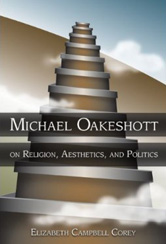
Michael Oakeshott on Religion, Aesthetics, and Politics
Some critics have called 20th-century British philosopher Michael Oakeshott a guru to the Tories, while others considered him one of the last proponents of the British idealist school. Corey makes the case that Oakeshott’s moral and political philosophies were more informed by religious and aesthetic considerations than has previously been supposed. Corey focuses on a wealth of early material from Oakeshott’s career, as well as his acclaimed "Tower of Babel"; essays, to show that these works illuminate his thinking in ways that could not have been realized prior to their publication.

On Looking
Purpura’s book of lyric essays is concerned with the aesthetics and ethics of seeing. Her essays question art, its responses, and its responsibilities; challenge familiar and familial relationships; and alter the borders between the violent and the luminous, the harrowing and the sensual. During her writing career, Purpura has published a number of award winning essays, including "Glaciology," which was awarded a 2005 Pushcart Prize and "Increase," which won the Association of Writers and Writing Programs award in creative nonfiction.

A Miraculous Journey
Walker-Slocum, Oberlin emerita professor of pianoforte, tells the story of how she rose to the top of her profession despite insurmountable physical odds. Residing in a community which showed obvious preference for light-skinned Negroes; living in a household where she was severely disciplined for the slightest infraction despite her illness; and growing up with a gifted brother whose talent lay in the same field as hers. She also tells of her personal experiences while teaching, performing, and meeting the one, true love of her life.
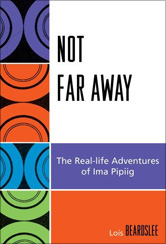
Not Far Away: The Real-Life Adventures of Ima Pipiig
In this semifictional memoir, Beardslee gives a chilling account of racism particularly that leveled against Native women in language that is supple, evocative, often comical, and always incisive. Her fictional heroine, the teacher Ima Pipiig (pronounced "buh-BEEG"), endures humiliating insults from school administrators, fellow teachers, students, and callous neighbors. For years, she suffers in silence, believing that opposing bigotry would only fuel its caustic flames but then she begins to speak out. Interspersed among the chapters chronicling Ima’s experiences are essays and speeches written by the author herself, blurring the line between fiction and fact and creating a resounding echo of resistance.
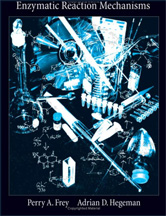
Enzymatic Reaction Mechanisms
This textbook explores enzymatic reaction mechanisms by first defining the scope of the problem of understanding enzymatic catalysis and introducing most of the principles, theory, and concepts. Other points include an overview of enzyme kinetics, as well as a discussion of classic organic coenztmes, metalloceoenzymes, and cofactors and their contributions to catalyzing enzymatic processes. According to Oxford Press, this 848-page book is the long-awaited replacement for W.P. Walsh’s 1979 volume, Enzymatic Reaction Mechanisms, which was widely used in courses on enzymatic mechanisms for many years.

Lone Stars of David: The Jews of Texas
Jewish life in the United States is too often told from an East Coast perspective. Lone Stars of David presents a different panorama, with narratives of Jews who ventured to Texas before the battle of the Alamo, who fought for the Confederacy, who herded cattle up the Chisholm Trail, who drilled for oil, and who forged Jewish communities far from New York’s Lower East Side. These essays also describe how Texas Jews faced the Ku Klux Klan and how they respond today to Christian fundamentalism.
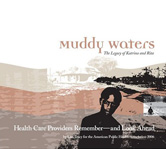
Muddy Waters: The Legacy of Katrina and Rita
Hurricane Katrina, closely followed by Hurricane Rita devastated the Gulf Coast of Mississippi, inflicted serious losses in Florida and Alabama as well as the harder-hit states at the core of the disaster, and all but destroyed a city unique in American culture. Through it all, health-care providers in the Gulf States and those who had come to help continued to assess what one responder called "a lifetime of lessons in a single storm."; Tracy offers an oral history of the public health response to hurricanes Katrina and Rita and the flooding of New Orleans and provides an unprecedented glimpse into what really happened.
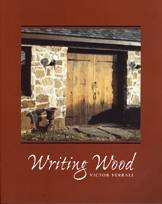
Writing Wood: Essays and Other Scribblings
For more than five decades, Ferrall, Beloit College’s ninth president, has been a serious cabinetmaker. In this book he writes about his relationship with wood. Ferrall’s love of wood and of craft has been a constant throughout his academic years and in retirement. In addition to making furniture, he sculpts, paints, makes prints, plays the clarinet, and writes.
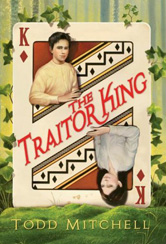
The Traitor King
In this book of fantasy, Darren Mananann and his older sister, Jackie, are looking forward to their annual family visit to their uncle’s cabin in Maine. However, Uncle Will has disappeared, leaving a mysterious note. While all of the other adults get down to some serious drinking, the siblings begin searching for him. A trip to the library and an inadvertent journey to Tir na N’Og, land of magical creatures, convince the children that their family has a unique tie to the unseen world.
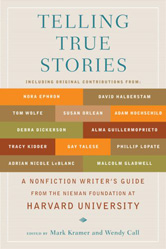
Telling True Stories: A Nonfiction Writer’s Guide from the Nieman Foundation at Harvard University
The country’s most prominent journalists and nonfiction authors gather each year at Harvard’s Nieman Conference on Narrative Journalism. Telling True Stories presents their best advice—covering everything from finding a good topic, to structuring narrative stories, to writing and selling one’s first book. More than 50 well-known writers offer their most powerful tips, including Tom Wolfe on the emotional core of the story; Gay Talese on writing about private lives; Malcolm Gladwell on the limits of profiles; Nora Ephron on narrative writing and screenwriters; and Alma Guillermoprieto on telling the story and telling the truth. Kramer is founding director of the Nieman Program on Narrative Journalism at Harvard.
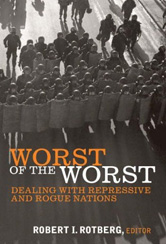
Worst of the Worst: Dealing with Repressive and Rogue Nations
How dangerous and oppressive are the world’s repressive states? Rotberg and his colleagues present an innovative, transparent approach to determining which of these nations are most problematic and thus demand immediate policy attention. Worst of the Worst defines the actions that constitute repression and proposes a method of measuring human rights violations. It provides an index of nation-state repressiveness, ranking nations on a 10-point scale and classifying them as gross, high, or aggressive repressors. Rotberg is director of the Program on Intrastate Conflict, Conflict Prevention, and Conflict Resolution at Harvard University’s John F. Kennedy School of Government, and president of the World Peace Foundation. He has authored and edited numerous books, including State Failure and State Weakness in a Time of Terror (Brookings, 2003).
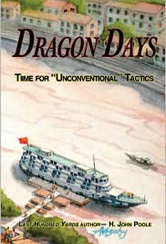
Dragon Days: Time for "Unconventional" Tactics
Poole, a retired United States Marine commander, offers two studies in Dragon Days: how a rising superpower may be hiding its Maoist expansion behind Islamic insurgency, and what America’s armed forces must do to curtail either. Poole’s previous works include The Last Hundred Yards: The NCO’s Contribution to Warfare (Prosperity Press, 1997), One More Bridge to Cross: Lowering the Cost of War(Posterity Press, 2003), and Terrorist Trail: Backtracking the Foreign Fighter (Prosperity Press, 2006).
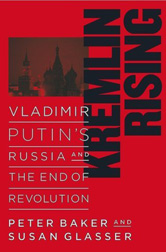
Kremlin Rising: Vladimir Putin’s Russia and the End of Revolution
With the 1991 collapse of the Soviet Union, Russia launched itself on a fitful transition to Western-style democracy. But a decade later, Boris Yeltsin’s handpicked successor, Vladimir Putin, a childhood hooligan turned KGB officer who sought to restore the order of the Soviet past, resolved to bring an end to the revolution. Kremlin Rising goes behind the scenes of contemporary Russia to reveal the culmination of Project Putin, the secret plot to reconsolidate power in the Kremlin. Baker and Glasser were Moscow bureau chiefs for the Washington Post from 2001 to 2004.

Pinned Down by Pronouns
"This book is about who gets to talk about gender, who needs to talk about it, who even thought about talking about it,"; writes Davies in the book’s introduction. "It’s about who has to think about talking about it. It’s also about who knows race and class and ableism in their souls, and who doesn’t have to know it (or doesn’t think they have to)."; Pinned Down has a number of contributors, including Evan Hemphill ’03.
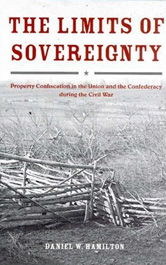
The Limits of Sovereignity: Property Confiscation in the Union and the Confederacy during the Civil War
Americans take for granted that government does not have the right to permanently seize private property without just compensation. Yet for much of American history, such a view constituted the weaker side of an ongoing argument about government sovereignty and individual rights. What brought about this drastic shift in legal and political thought? Hamilton locates that change in the crucible of the Civil War.
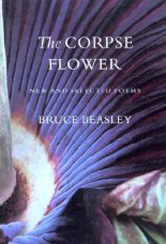
The Corpse Flower: New and Selected Poems
The Corpse Flower brings works from Beasley’s first four award-winning collections together with 25 new poems, organizing them around the metaphor that gives the book its title: an enormous tropical bloom that reeks like carrion, and around whose three-day florescence "dung beetles and flies and sweat bees swarm / . . . pollen gummed all over / their furred feet."; The corpse flower serves as a figure for Beasley’s coming to terms with birth and death, fecundity and decay, the illusion of death, and the flourishing of the rare and beautiful out of the materials of the decayed. Beasley is the author of five books, including Spirituals and Signs and Abominations. Among his awards are two Pushcart prizes.
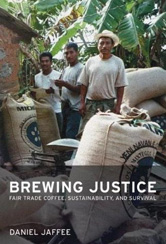
Brewing Justice: Fair Trade Coffee, Sustainability, and Survival
This study of indigenous coffee farmers in Oaxaca, Mexico, offers an investigation of the social, economic, and environmental benefits of fair trade. Readers are taken into the lives of coffee-producer households and their communities, and are given an analysis of the effects of fair trade on everyday life as well as the limits to its impact. Jaffee also explores the changing politics of the international fair trade movement, illuminating the complex dynamics of this alternative market and its relationship to the global economy. Brewing Justice was a 2008 Finalist for the C. Wright Mills Award from the Society for the Study of Social Problems.
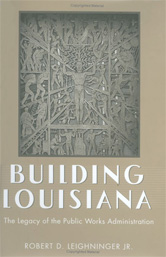
Building Louisiana: The Legacy of the Public Works Administration
In the 1930s, the Public Works Administration (PWA) built a tremendous amount of infrastructure in a very short time. Using Louisiana as a point of reference, Leighninger documents the projects one New Deal agency erected in this southern state and places these in social and political context. Leighninger is the author of Long-Range Public Investment: The Forgotten Legacy of the New Deal (University of South Carolina Press, 2007), which explores the enduring achievements of public investment during the New Deal era.
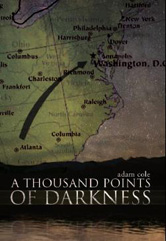
A Thousand Points of Darkness
In this fictitious story, Rosa’s mother loses her job, and the family must make the dangerous trek across the Unincorporated States to reach Washington, D.C. and a new life. The road from Atlanta to D.C. is dark and rarely traveled, full of independent white communities that have long since dissociated themselves from the urban hubs and that will kill to reassert their sovereignty. As the convoy makes its perilous journey, Rosa will learn what she has in common with a Chinese family stripped of their privilege, a musician whose guitar is too precious to play, and a mysterious drug-worshipper named Firoz. Cole, a music educator and Guild Certified Feldenkrais Practitioner, is also the author of Hofstadter’s Grandchildren: Metawritings inspired by Gödel, Escher, Bach (Xlibris, 2007), a collection of poems and fiction.
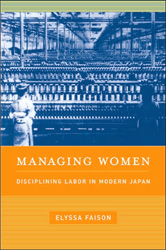
Managing Women: Disciplining Labor in Modern Japan
At the turn of the 20th century, Japan embarked on a mission to modernize its society and industry. For the first time, young Japanese women were persuaded to leave their families and enter the factory. Managing Women focuses on Japan’s interwar textile industry, examining how factory managers, social reformers, and the state created visions of a specifically Japanese femininity.
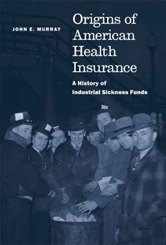
Origins of American Health Insurance: A History of Industrial Sickness Funds
How did the United States come to have its distinctive workplace-based health insurance system? Why did progressive initiatives to establish a government system fail? Murray explores the history of health insurance in the United States from its roots in the 19th-century sickness funds offered by industrial employers, fraternal organizations, and labor unions to the rise of such group plans as Blue Cross and Blue Shield in the mid-20th century.
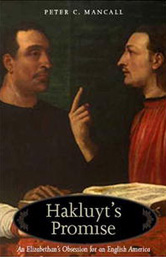
Hakluuyt’s Promise: An Elizabethan’s Obsession for an English America
Richard Hakluyt, a younger contemporary of William Shakespeare, advocated the creation of English colonies in the New World at a time when the advantages of this idea were far from self-evident. This book describes in detail the life and times of Hakluyt, a trained minister who became an editor of travel accounts.
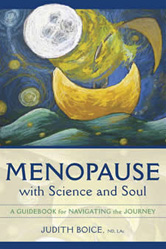
Menopause with Science and Soul: A Guidebook for Navigating the Journey
Boice covers all the issues a woman faces during this significant life passage called menopause, from making important lifestyle choices regarding exercise, nutrition, and hormone therapy, to nurturing mental and emotional health. In addition to presenting the latest medical information, naturopath offers stories, interviews, and rituals representing diverse traditions (Native American to Gnostic, Buddhist to Catholic) to help support women in their journeys. Whether a woman is wondering about hot flashes or an unexpected rebirth of creativity, this sensitive companion provides all the scientific and soul-centered support she needs. Boice, a naturopathic physician, and acupuncturist, has written articles for several magazines and authored a number of books on health issues, including Pocket Guide to Naturopathic Medicine (Pilgrims Publishing, India, 2002) and Lo Que No Nos Cuentan Los Medicos (Gestion 2000, Tra edition, 2003), a comprehensive guide and advice on the emotional, mental, and spiritual aspects of health.
Music Box

Lumatic
This self-titled debute CD contains music that fuses elements of ambient pop with experimental rock. The songs are built from subtle layers of guitar, Rhodes, strings, accordion and samples, and interlaced with infectious rhythms and moody-female vocals. Band members are John Bollinger, Pete Smith, Chris Buono, Ty Citerman, Shahzad Ismaily, Franz Nicolay, Maxim Moston, Marlon Barry, and Jason DiMatteo.
Bookshelf’s hiatus in the print version of the OAM has left a large number of books awaiting inclusion. This new online Bookshelf and Music Box section will only be provided in conjunction with the online version of the OAM. Older books and CDs that were sent to the OAM will have first priority. We apologize for this delay.
